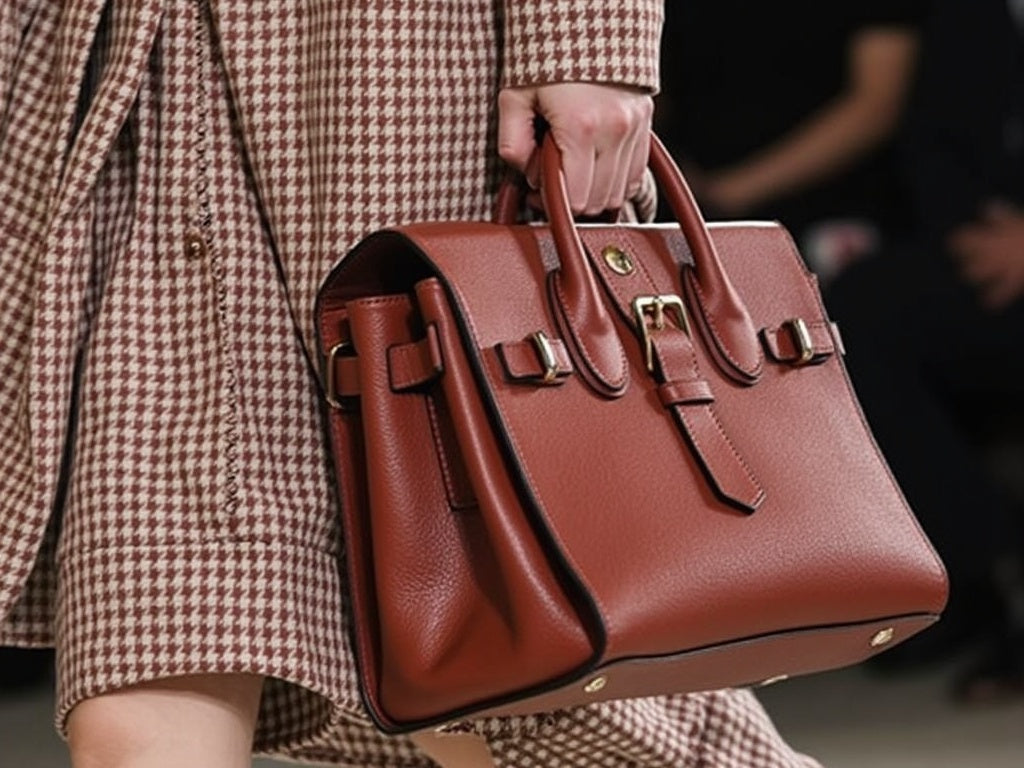The Middle Is Where Creative Businesses Go to Die: Real Conversations With Makers Who Are Barely Surviving.
There’s a moment in every founder’s journey that doesn’t make it to Instagram.
It usually happens around year four or five. Your products are selling. People love what you make. You’ve built a loyal following. From the outside, it looks like you’ve “made it.”
But inside? You’re drowning.
You haven’t paid yourself properly in months. You’re choosing between investing in growth and paying rent. Every order brings relief and dread in equal measure — relief that people still want what you make, dread because you’re not sure you can handle the fulfillment. Your “bookkeeping system” is a shoebox and a silent prayer at tax time.
You’re too big to keep winging it from your kitchen table. But too small to afford real help, real systems, real infrastructure.
Welcome to the middle. This is where most creative businesses die.
The Conversations We’re Having
For the past two months, we’ve been talking to independent makers as we build Brix + Bailey, a marketplace designed specifically for small-batch creators. Ceramicists. Jewelers. Furniture makers. Textile artists. Upcylers. Leather workers.
Different products. Different aesthetics. Different markets.
But the same brutal pattern kept emerging in every conversation.
Sarah makes ceramics. Year five. Sells out every collection. Has a waitlist for custom orders. Spends two hours a day actually making pottery. The other twelve? Shipping. Inventory. Emails. Bookkeeping. Social media. Customer service.
“I became a maker because I love creating,” she told us. “But I spend 90% of my time doing things I’m not good at and don’t enjoy. And I can’t afford to hire help yet.”
James designs and builds custom furniture. Year four. Featured in design blogs. Commissioned by architects. Struggling to get a business loan because his revenue is “inconsistent.”
“They said my business model is too risky,” he explained. “But I’m not inconsistent. I’m craft. I make pieces that take weeks, not hours. That’s not risk. That’s quality. But the system doesn’t see it that way.”
Maria runs a small textile studio. Year six. Beautiful work. Passionate following. Exhausted beyond measure.
“Everyone tells me to scale,” she said. “Get investors. Hire a team. Mass produce. But I like making 200 pieces a year, not 20,000. Why is wanting to stay small treated like I’m not ambitious enough? I’m ambitious about craft, not about becoming a corporation.”
The Pattern: Years 1–7 of a Creative Business
After twenty conversations, we started seeing a predictable arc:
Years 1–2: The Honeymoon Phase
- Everything is exciting
- Every sale feels like magic
- Running on passion, coffee, and adrenaline
- Friends and family celebrate your launch
- Media loves “new maker” stories
- You’re scrappy and that’s romantic
Year 3: The Reality Check
- You’ve proven market demand exists
- But your DIY systems are breaking down
- You’re spending more time on operations than creating
- The business is outgrowing your skill set
- Help wanted, but budget says no
Years 4–5: The Grind
- Too big to wing it
- Too small for professional help
- Drowning in operations you never trained for
- Every growth opportunity feels like a threat
- Making money but not paying yourself
- Successful enough to be exhausted, not enough to breathe
Years 6–7: The Crisis Point
- Can’t scale without capital
- Can’t get capital without scale
- Banks want “predictable” revenue
- Investors want “scalability”
- Your craft-based business model doesn’t fit their boxes
- Something has to give
Year 8+: You Either Made It Through…
…or you’re gone.
According to the U.S. Bureau of Labor Statistics, about 65% of small businesses survive past the first two years. But only 25% make it to 15 years or more.
The drop-off happens in the middle.
Not at launch (that’s actually the easy part). Not after you’ve “made it” (you’ve built infrastructure by then). But in those brutal middle years when you’re trying to transform a promising start into a sustainable business.
Why Traditional Business Support Fails Makers
The ecosystem for supporting creative businesses is broken. Not because people don’t care, but because it’s optimized for the wrong stages and the wrong business models.
The Launch Industrial Complex
There are hundreds of programs designed to help people start creative businesses:
- Business incubators for first-time founders
- “Turn your passion into profit” courses
- Kickstarter and other reward-based crowdfunding platforms
- Small business grants for startups
- Accelerator programs for new ventures
These are valuable. They help people get off the ground.
But they all assume the hard part is starting. They assume that once you have proof of concept, you’ll figure out the rest.
You won’t. Most people don’t.
The Venture Capital Mismatch
On the other end of the spectrum, there’s venture capital and traditional business lending. But these are designed for businesses that:
- Can scale rapidly and predictably
- Have consistent, measurable growth metrics
- Follow established business models
- Can provide collateral or demonstrate “bankable” revenue patterns
A maker who creates 50 handcrafted pieces per month and sells them at seasonal markets doesn’t fit this model. Not because the business isn’t viable, but because craft production operates on fundamentally different principles than mass production.
The system sees inconsistency. The maker sees seasonality, quality, sustainability, and craft.
The Missing Middle
Between “here’s how to launch” and “here’s $500K in venture capital” lies a vast gap where most creative businesses actually operate.
This is where you need:
- Operational infrastructure — real systems for inventory, fulfillment, bookkeeping, customer management
- Strategic growth capital — not “bet the farm” investment, but “thoughtfully expand” funding
- Business knowledge — how to price properly, manage cash flow, hire your first employee, build processes
- Community — other makers at the same stage, figuring it out together
- Tools that fit your scale — not enterprise software you can’t afford, not DIY hacks that don’t scale
This infrastructure barely exists for small-batch creative businesses.
What Makers Actually Need (In Their Own Words)
We asked every maker we spoke with: If you could wave a magic wand and create the perfect support system for where you are right now, what would it include?
Here’s what they told us:
“Help with the unglamorous stuff”
“Everyone wants to talk about my creative vision. Nobody wants to help me set up QuickBooks or figure out shipping logistics or write terms and conditions. But that’s what’s actually killing me.”
“Access to capital that doesn’t require giving up equity”
“I don’t want investors. I don’t want to scale into a corporation. I just need $15,000 to buy better equipment so I can work more efficiently. Why is that so hard to find?”
“Business advice from people who understand craft”
“Every mentor I’ve had comes from corporate. They tell me to ‘just scale it’ or ‘automate production’ or ‘hire a team.’ They don’t understand that the whole point is craft. I need advice from people who get that.”
“A marketplace that actually works for small-batch”
“Etsy is saturated with dropshippers. Amazon is for mass production. My own website gets no traffic. I need somewhere that curates quality, supports makers, and actually drives sales without me becoming an SEO expert.”
“Community with other makers at my stage”
“All my maker friends are either just starting out or already established. Nobody’s in the middle with me. I feel like I’m failing because I haven’t ‘figured it out’ by year five. But maybe it’s just hard for everyone?”
“Permission to stay small and still be successful”
“I’m tired of being told my business isn’t ambitious enough because I don’t want to scale. I make $85K a year doing work I love with complete creative control. Why is that considered ‘just a hobby’? I’m running a real business. It just doesn’t look like venture capital thinks it should.”
The Infrastructure Gap Is Solvable
Here’s what gives us hope: Every maker we talked to is still fighting.
Despite the exhaustion. Despite the financial stress. Despite the loneliness of the middle years. Despite a system that tells them they’re doing it wrong.
They’re still making. Still showing up. Still believing their work matters.
That resilience deserves infrastructure.
The problem isn’t that makers lack talent, dedication, or market demand. The problem is that the bridge between “passionate startup” and “sustainable business” is rickety, narrow, and barely visible.
We can build a better bridge.
Not by creating another incubator for launches. Not by trying to squeeze craft businesses into venture capital boxes.
By building infrastructure specifically designed for makers in the middle:
1. A marketplace that values curation over saturation Not another platform where you’re competing with mass production. A place where small-batch makers are the whole point, not an afterthought.
2. Operational support that fits your scale Inventory management. Order fulfillment. Commission structures. Payout automation. The boring infrastructure that saves businesses.
3. Business knowledge from people who get craft Pricing strategies for small-batch production. Cash flow management for seasonal businesses. How to hire when you’re not sure you can afford it. Real advice from people who understand your model.
4. Community with makers at your stage Monthly conversations. Shared struggles. Collective problem-solving. The loneliness of the middle is crushing. Community makes it bearable.
What We’re Building
This is why Brix + Bailey exists.
We started these conversations because we were building a platform and wanted to understand what makers actually needed. What we found was a pattern of pain so consistent, so urgent, that it changed how we’re approaching everything.
We’re not just building another marketplace. We’re building the infrastructure for makers in the middle.
A platform that combines:
- Curated marketplace for selling without inventory risk
- Operational tools built for small-batch businesses
- Community of makers supporting makers
Not built for corporations and scaled down. Built from the ground up for the creative businesses most likely to fail between years 3–7.
Because the middle doesn’t have to be where dreams die. It can be where they grow strong enough to last.
Join the Conversation
Share your thoughts on here or email us here
Every conversation helps us build something better. We’re listening.
#CreativeBusiness #SmallBusiness #MakerMovement #Entrepreneurship #Crowdfunding #HandmadeBusiness #CraftBusiness #SmallBatchProduction #IndependentMakers #SustainableBusiness #CreativeEntrepreneur #MakerSupport


